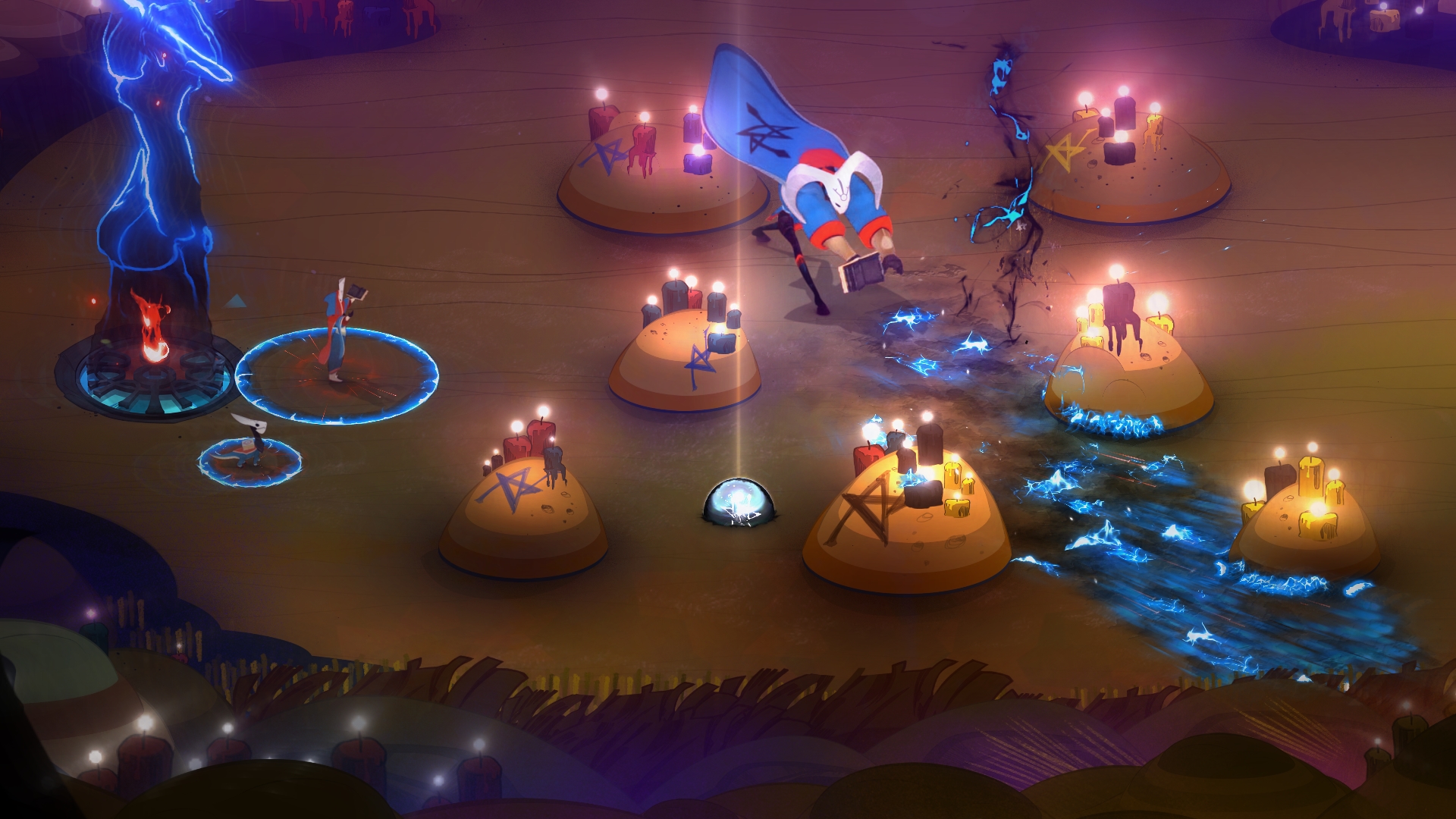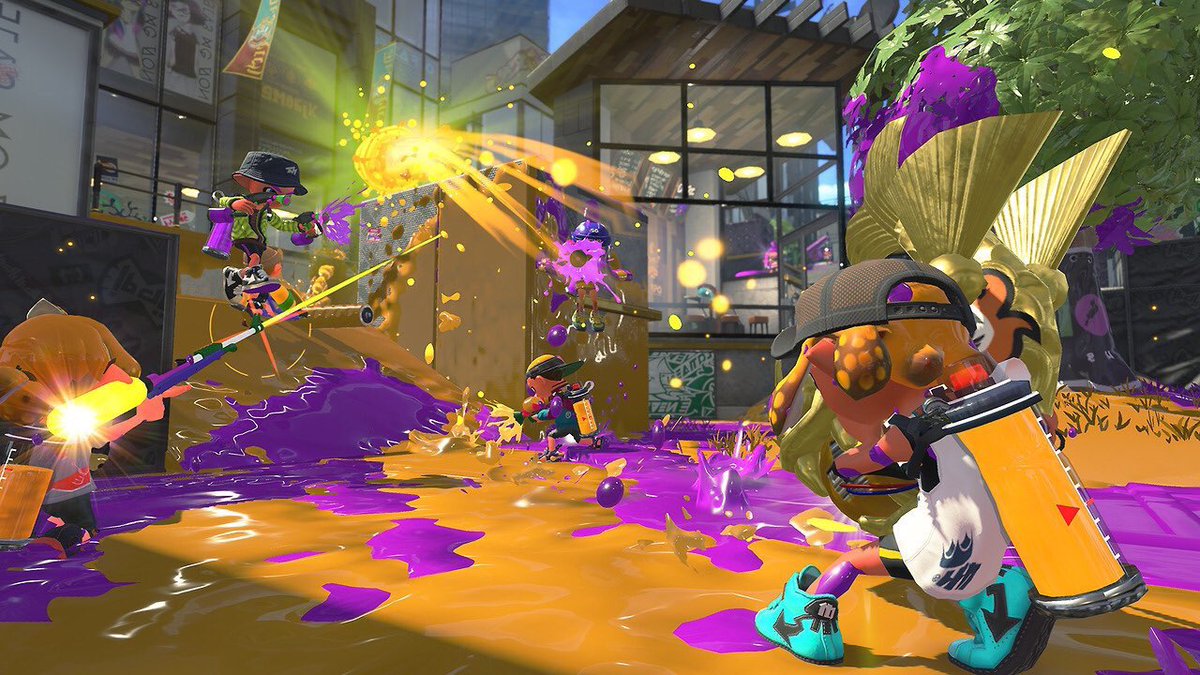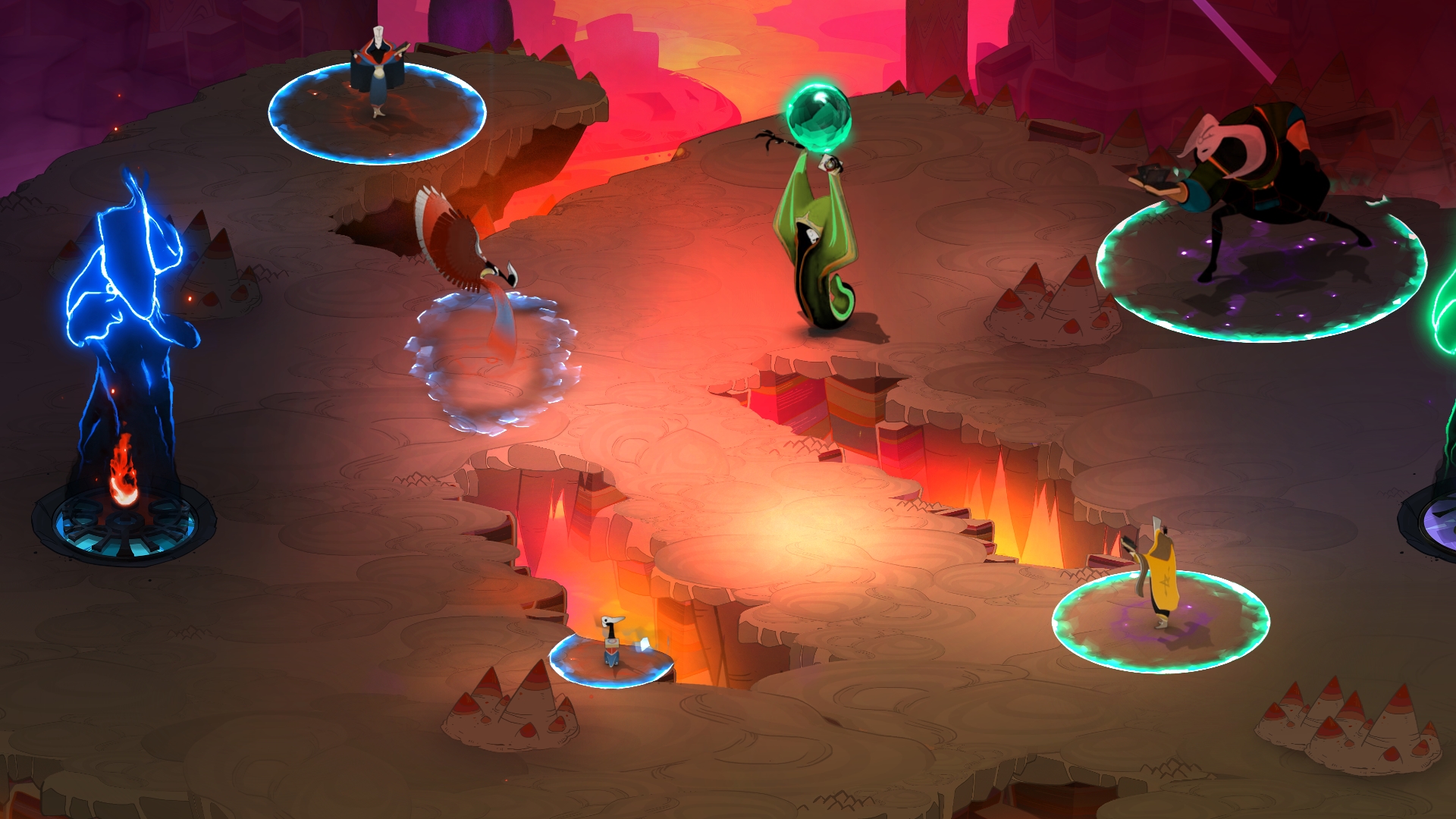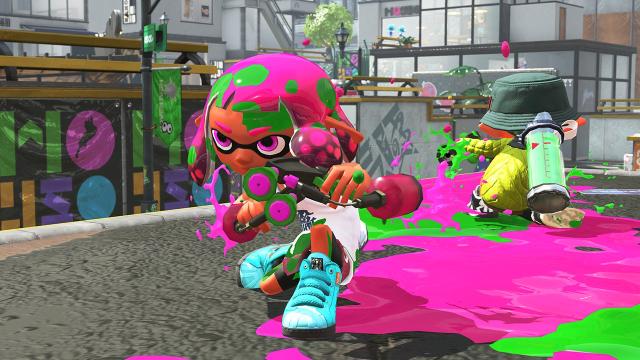Controlling the field is a core tenet of any competition. Fighting games are about the footsies, League and Dota demand good positioning, shooters like Overwatch and Counter-Strike are as much about tactically holding or taking key areas as they are shooting accuracy. At a high-level, controlling the field of play is as important as play itself.
Besides my usual diet of nonstop Dota 2, I’ve been binging two games: Pyre and Splatoon 2. Both are excellent, well-made games that make the concept of spacing tactile. Not just through visible reminders, spacing is a gameplay mechanic in both Pyre and Splatoon 2 in a very literal way.
In Pyre, you command a trio of nomads in a game of spiritual basketball, duelling over control of an orb of lunar essence that acts as the ball. You can only move one player at a time, but each player projects an aura, a visible manifestation of their presence on the field that will temporarily banish an opponent from the match when hit.

Though aura evolves over the course of the campaign, in its static state, it’s a representation of the player’s control of the field. Large combatants such as Jodariel emit a significant aura, commanding a portion of the field. Smaller players such as Rukey have less aura, thanks to their stature, but they’re faster and more manoeuvrable. Since contestants can also focus their aura to project it in a direction, momentarily ceding their control of the area around them, there’s always a risk-reward option to consider.
The cadence of Pyre is the gradual moves and countermoves of each player, as they attempt to enact their own strategy and deny the opponent the space to execute theirs. Auras act like kinetic and potential energy — only controlling one player at a time means the two are always static, and so arranging your team is as important as individual movements. When a harpy flies over one defender, do you have a second in place to intercept? Can you use Jodariel’s massive aura to pressure back the enemy team, or will her size open her up to an easy banishment if left alone too long?
If Pyre‘s combatants embody their aura, Splatoon 2‘s inklings weaponise it. Ink is everything in Splatoon. It is the tool for eliminating other players, the lane for offensive and defensive movement. Ink is how you achieve your win condition, through either domination of a control point or literal coverage of the map.

When a Splatoon match ends, the player is shown an overhead view of the map, covered in each team’s ink. It’s easy to see where one team struggled to hold their ground, or where a key last-minute special seized control of a contested zone. You can see blots that tell tales, show how a team reacted and fought, or even whether they remembered to cover their spawn or not.
Ink is your ammo, and your only source of recuperating said ammo is to return to an area of ink you control. When you fire a weapon, you’re not just shooting bullets, but exerting your team’s influence onto an area of the map. The other team may counter back, try to outflank you, use tools or abilities to force your offensive around or backwards.
These paradigms are not unique to either game. A Molotov or smoke grenade in Counter-Strike: Global Offensive cuts off team movement in the same way an ink sprinkler in Splatoon 2 does, and a fighter’s presence or stature in Street Fighter exerts an unseeable aura much like a Pyre contestant.

But these games visualise that unseeable, ethereal concept. When watching a Dota 2 game, it can be hard to understand why certain teams are shying away from vacant areas of the map until you understand that vision and minions exert presence like ink. Positioning is easier to understand in these games because they’re games built around contesting control. Analysts can understand that a League of Legends team lost because they gradually ceded map control throughout the match, but any layperson can look at a Splatoon 2 map and tell you which team won.
Each game has its own version of control and spacing, because as the mechanical skill difference between two players becomes more even, the game expands beyond the two players and into the arena. Keeping a fighter on the ropes, pushing a foe into the corner, zoning out a key player, denying vision from the enemy. Pyre and Splatoon 2 are both brilliant for a number of reasons, but I’m drawn back to them because of how well they not only visualise, but employ the concept of spacing as a raw mechanic.

Comments
4 responses to “Learning To Own The Arena In Splatoon 2 And Pyre”
Splatoon is great at teaching these things to newcomers to proper team play.
…Splatoon has team play now?
League mode has some insane tactics going on.
The best tactic I’ve come across is “make Gooky’s game throw an error every single match.”